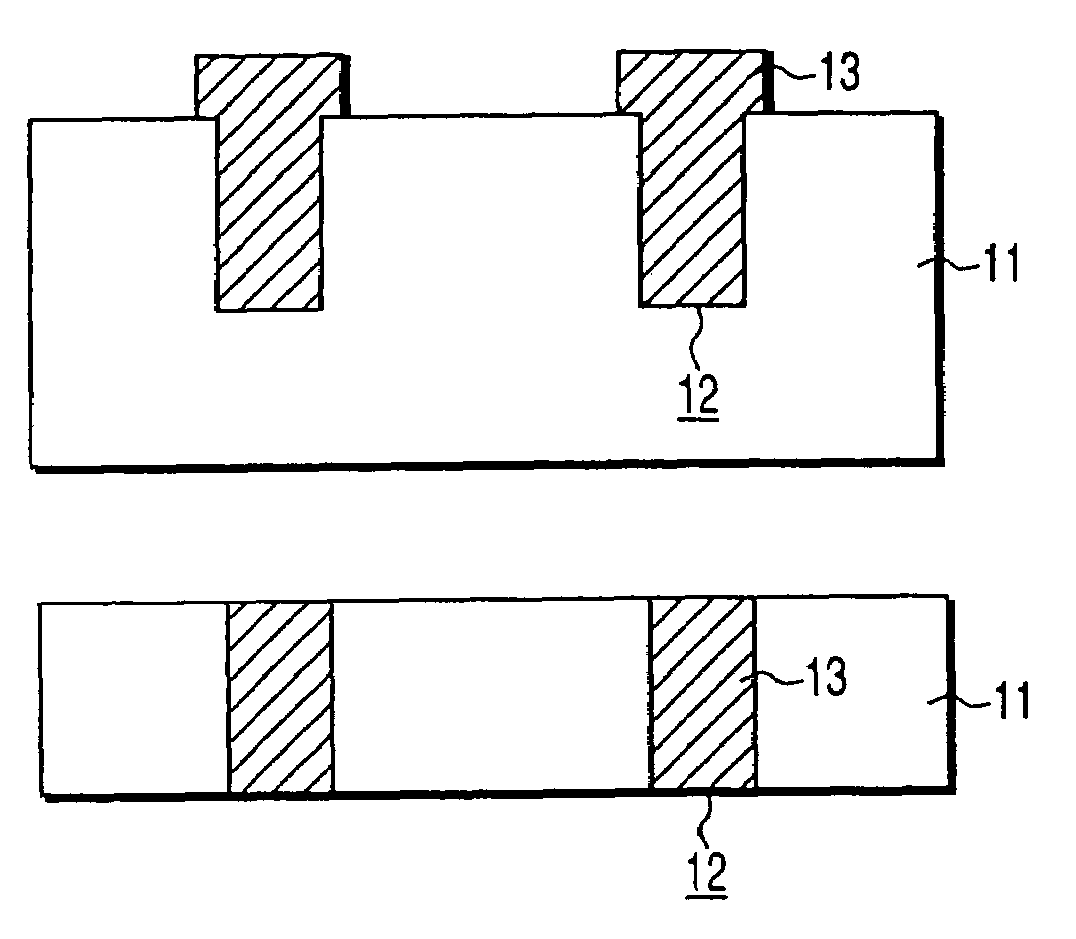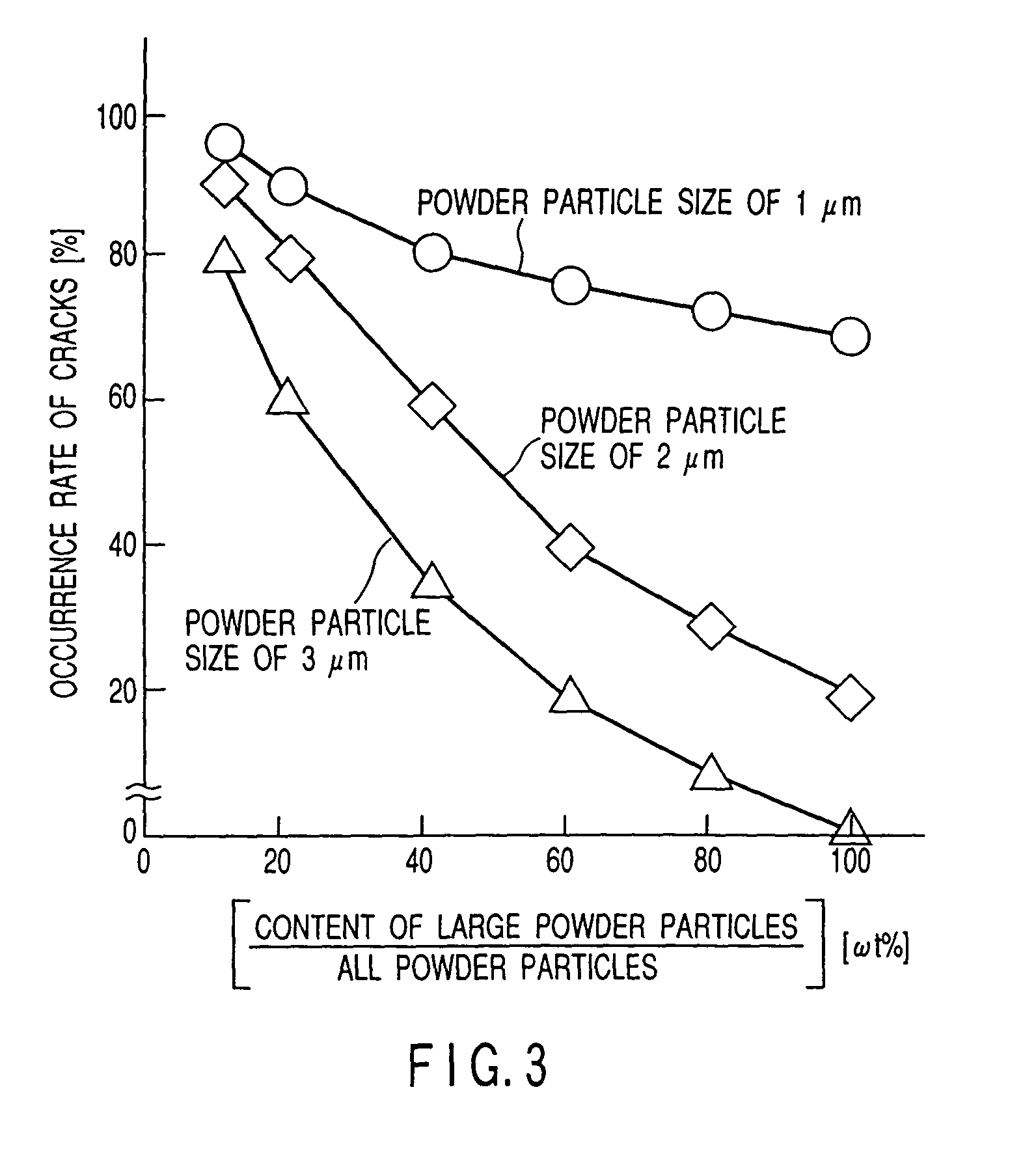Paste including a mixture of powders, connection plug, burying method, and semiconductor device manufacturing method
a technology of burying method and paste, which is applied in the direction of semiconductor devices, semiconductor/solid-state device details, electrical apparatus, etc., can solve the problem that the trench cannot be filled with paste, and achieve the effect of easy removal, and increasing the width of the trench
- Summary
- Abstract
- Description
- Claims
- Application Information
AI Technical Summary
Benefits of technology
Problems solved by technology
Method used
Image
Examples
first embodiment
(First Embodiment)
[0058]In this embodiment, a paste is buried in a trench formed in the surface of a substrate by a printing method using a squeegee. In the conventional method, as shown in FIGS. 5A and 5B, voids and recesses were formed in trenches because a paste is not sufficiently buried in the trenches.
[0059]The present inventors found that the causes of this problem were a change in the viscosity of the paste when buried with the squeegee and the shrinkage of the paste upon volatilization (to be referred to as hardening hereinafter) of the solvent of the paste. To improve the buried shape of a paste, this embodiment therefore uses a paste for which a viscosity change upon burial and a solids content are controlled.
[0060]FIG. 1 shows the relationship between the viscosity ratio of a paste and the burying ratio of a viahole. In this case, the viahole has a depth of 50 to 200 μm and an opening diameter of 100 μm. The paste was buried under the condition that the viscosity measure...
second embodiment
(Second Embodiment)
[0085]In this embodiment, a chip-through plug (connection plug) for a multichip module is formed by using a paste having excellent burying characteristics as in the first embodiment.
[0086]The following conditions are required for a chip-through plug. The chip-through plug must be sufficiently buried in a trench to allow the chip to make lower-surface contact. The upper portion of the chip-through plug (to be referred to as the plug upper portion hereinafter) must be flat to allow an interconnection to be formed on the plug upper portion. The lower portion of the chip-through plug (to be referred to as the plug lower portion hereafter) must have wettability with respect to a repairable material such as a solder and be dense not to absorb a solder or the like.
[0087]As a method of satisfying such requirements, a method of improving the buried shape, planarization, and denseness of a chip-through plug by forming sputtered films on both the plug upper portion and the p...
third embodiment
(Third Embodiment)
[0096]As a method of burying a filling member having conductivity such as a chip-through plug in a trench, a method of dispersing a conductive powder with a solvent in advance, applying this powder (powder+solvent) on the substrate in which the trench is formed, and precipitating the powder in the solvent, thereby burying the powder in the trench is available in addition to the method of burying a paste with a squeegee.
[0097]For example, an Ni powder having an average particle size of 1 μm is dispersed in a methanol solution, and the solution is applied to a substrate in which a plug is formed. Since the dispersed NI powder precipitates, the Ni powder is deposited on the substrate. The substrate is then dried to evaporate the methanol. Thereafter, the Ni powder is calcined. As a consequence, the powder is completely buried in the trench (this method will be referred to as the precipitation method hereinafter). After this process, the Ni powder portion calcined outs...
PUM
| Property | Measurement | Unit |
|---|---|---|
| viscosities | aaaaa | aaaaa |
| viscosities | aaaaa | aaaaa |
| particle size | aaaaa | aaaaa |
Abstract
Description
Claims
Application Information
 Login to View More
Login to View More - R&D
- Intellectual Property
- Life Sciences
- Materials
- Tech Scout
- Unparalleled Data Quality
- Higher Quality Content
- 60% Fewer Hallucinations
Browse by: Latest US Patents, China's latest patents, Technical Efficacy Thesaurus, Application Domain, Technology Topic, Popular Technical Reports.
© 2025 PatSnap. All rights reserved.Legal|Privacy policy|Modern Slavery Act Transparency Statement|Sitemap|About US| Contact US: help@patsnap.com



